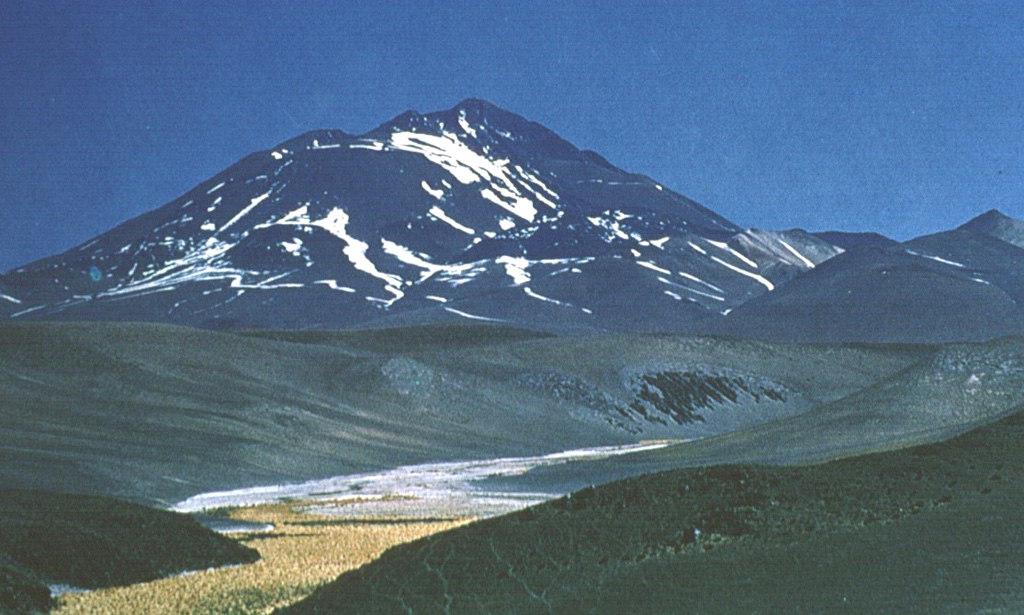Image GVP-06900

The world's highest historically active volcano, 6739-m-high Llullaillaco, sits astride the Chile-Argentina border. The summit, seen here from the NE, is formed by a smaller well-preserved cone that was constructed on an older edifice dating back to the early Pleistocene. A major debris-avalanche deposit produced by collapse of the older volcano extends eastward into Argentina. Growth of the modern cone was completed with the emplacement of a series of young lava flows down the northern and southern flanks.
Photo by Carlos Felipe Ramírez, courtesy of Oscar González-Ferrán (University of Chile).
![]() This image is made available under the Creative Commons BY-NC 4.0 license terms.
This image is made available under the Creative Commons BY-NC 4.0 license terms.

Llullaillaco
